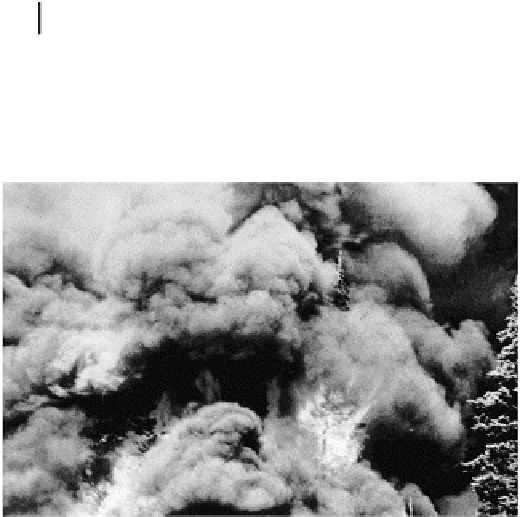Environmental Engineering Reference
In-Depth Information
chemical form by which the nutrient is absorbed by the plant. In addition to carbon (C),
hydrogen (H) and oxygen (O), cycles which involve gaseous components are nitrogen
(N), sulphur (S), chlorine (Cl) and selenium (Se). The major store of these nutrients is the
atmosphere, though only nitrogen and sulphur are of major importance. The remaining
eleven nutrient elements have no gaseous form, though of course they can and do exist in
the atmosphere as dust. In this group it is possible to distinguish between the
base
cations
which are absorbed by plants as the positively charged ion (cation), and those
absorbed as the negatively charged ion (anion). As we shall see, the distinction is vital for
the nature of the respective nutrient cycles. In the cation group are potassium (K
+
),
calcium (Ca
2+
), magnesium (Mg
2+
), iron (Fe
2+
or Fe
3+
), manganese (Mn
2+
), copper (Cu
2+
),
zinc (Zn
2+
) and cobalt (Co
2+
). Nutrient elements which cycle and are absorbed primarily
in the anion form are nitrogen (NO
3
-
), phosphorus (PO
4
3-
), molybdenum (MoO
−
4
), boron
(B(OH)
−
4
), chlorine (Cl
−
) and selenium (SeO
2
4
−
). Table 22.7 gives a classification of the
major nutrient cycles on the basis of the main store (atmosphere or lithosphere) and the
main chemical ion in the cycle (cation or anion). From the table it can be seen that the
metallic cations form a group, nitrogen and sulphur have some general similarities (with
some contrasts in detail), and phosphorus has a unique cycle.
Table 22.7 A classification of nutrient cycles
Store
Cationic
Anionic
Atmosphere
-
N, S
Lithosphere
K, Ca, Mg
P
Plate 22.2
Natural forest fires help to cycle nutrients. There is
some loss of carbon, nitrogen and sulphur in smoke, but many
bases like potassium, calcium and magnesium are
concentrated in the ash.
Photo: Ken Atkinson.







